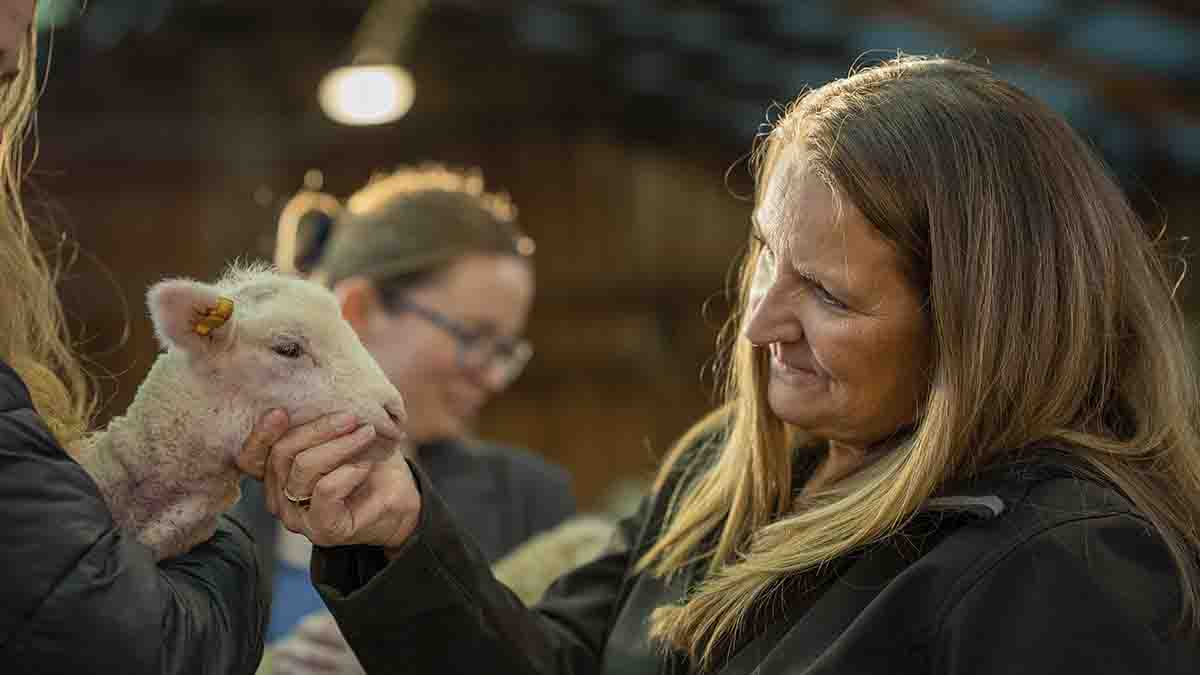Sequencing Ruminant Genomes
August 07, 2024
A University of Idaho researcher is co-lead of a recent paper outlining forthcoming projects and goals of a multi-institutional and interdisciplinary global collaboration of scientists devoted to sequencing the genomes of ruminant animal species.
Brenda Murdoch, an associate professor in U of I’s Department of Animal, Veterinary and Food Sciences specializing in molecular and genetic tools, and several researchers from her laboratory are among 78 authors of “RT2T: A Global Collaborative Project to Study Chromosomal Evolution in the Suborder Ruminantia,” which was published Aug. 5 in Nature Genetics.
Ruminants are animals that chew cud, including cattle, sheep, goats and various deer species. Dubbed the Ruminant Telomere-to-Telomere Consortium (RT2T), the team of scientists aim to enhance agricultural productivity and sustainability while supporting the conservation of endangered species. Their new genome assemblies could lead to valuable insights to improve future ruminant genetics.
The project was inspired by the HT2T Human Genome Project, which developed new tools Murdoch and her cohorts are using to sequence the entire ruminant genome from telomere to telomere for several different ruminant species. Telomeres are the end of the chromosomes.
“The work HT2T did ended up adding more sequence — stuff we couldn’t see before because the technology didn’t allow us to see it. They identified more genes,” Murdoch said. “We’re trying to get more sequence information using newer technologies in order to get telomere-to-telomere genomes for all of the ruminant species we outlined in the paper in order to ask questions about chromosome evolution, sex chromosome evolution and genes we did not know were there because we did not get all of that sequence.”
Also representing U of I on the project are Gabrielle Becker, Temitayo Olagunju, Morgan Stegemiller and Shangquian Xie. Other lead institutions on the project include the U.S. Department of Agriculture (USDA), University of Kentucky, University of Connecticut and University of Missouri.
RT2T embraces an open science model, ensuring that the data and results produced are freely accessible to the global research community. This approach advances collaboration derives input and guidance from diverse perspectives and encourages the engaged participation necessary to accelerate scientific discoveries and drive innovation in agricultural research. Scientists worldwide can access this data to conduct further studies, thereby fostering innovations that could reshape farming practices and animal breeding.
In addition to agricultural benefits, the comprehensive genome data produced by the RT2T can play a critical role in conservation efforts. High-quality genomic information is essential for managing the genetic diversity of endangered ruminant species and developing strategies to improve their populations' survival chances.
About the Ruminant T2T Consortium
The Ruminant T2T (RT2T) Consortium is a multi-institution and interdisciplinary global collaboration of scientists with the aim of producing high quality genome sequence of as many extant species as possible in the ruminant clade for a large-scale comparison of the genetic drivers of observed phenotypes underlying the diversity within this clade. The overarching goals of the RT2T consortium titled RT2T: A Global Collaborative Project to Study Chromosomal Evolution in the Suborder of Ruminantia, has recently been published in the journal Nature Genetics. The data from this project will lay the foundation and enable analyses of complete genomes across the ruminant clade to gain a broader understanding of function and evolution. This project is being jointly led by researchers Timothy Smith and Benjamin Rosen at USDA Animal Research Station, Rachel O’Neill at University of Connecticut, Theodore Kalbfleisch at University of Kentucky, Stephanie McKay at the University of Missouri and Brenda Murdoch at the University of Idaho. Funding from the intramural research program of the USDA National Institute of Food and Agriculture, grant No. 2023-67015-39000, allowed the consortium to meet and embark on this large project.

About the University of Idaho
The University of Idaho, home of the Vandals, is Idaho’s land-grant, national research university. From its residential campus in Moscow, U of I serves the state of Idaho through educational centers in Boise, Coeur d’Alene and Idaho Falls, nine research and Extension centers, plus Extension offices in 42 counties. Home to more than 12,000 students statewide, U of I is a leader in student-centered learning and excels at interdisciplinary research, service to businesses and communities, and in advancing diversity, citizenship and global outreach. U of I competes in the Big Sky and Western Athletic conferences. Learn more at uidaho.edu.






